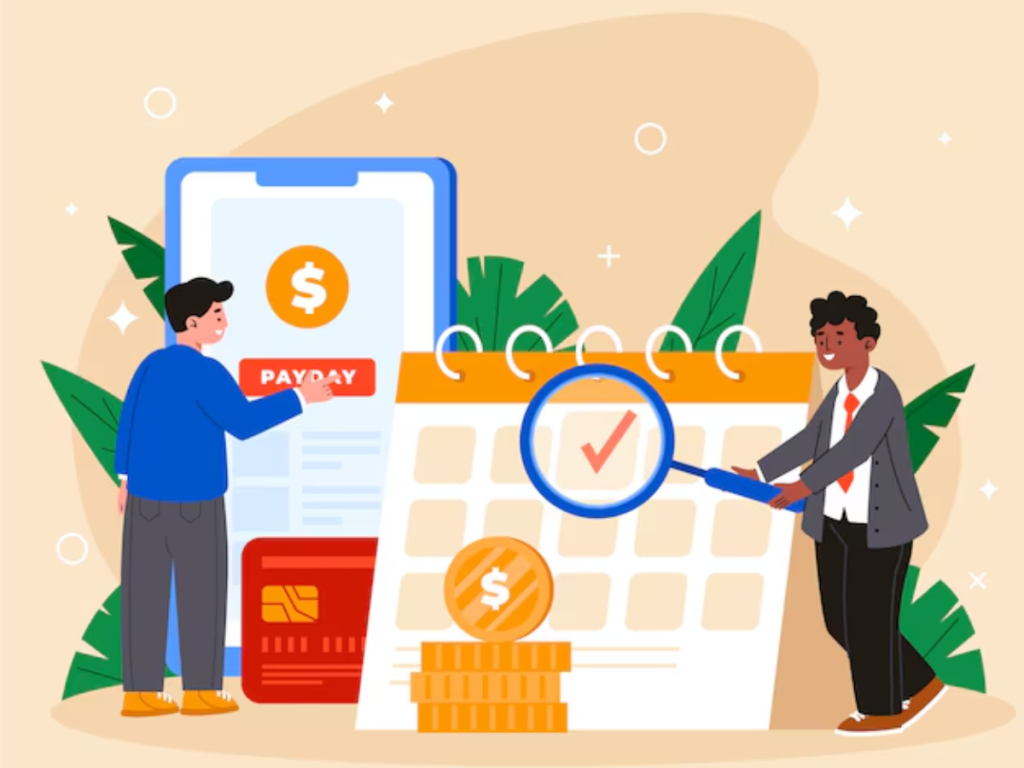Introduction
Prepayment of a loan is an economic strategy that enables lenders to settle their loans earlier than the initially agreed period. Prepayment of loans is a common option because most individuals want to lower the amount of interest paid over time and escape lengthy financial commitments. But before choosing to prepay a loan, an individual needs to grasp how it operates, its possible advantages and disadvantages, and if it is the most suitable option given an individual’s economic situation.
Determining the effect of loan prepayment involves careful consideration of personal finances, loan conditions, and future financial objectives. Prepayment may save money in most situations, but it is not always the most desirable option, particularly if it leads to financial hardship or if other investments are more lucrative for available funds.
What is Loan Prepayment
Loan prepayment is the process by which a borrower decides to repay all or part of the outstanding loan amount prior to the planned maturity of the loan term. The process may be either as a single lump sum payment or as regular extra payments made in addition to regular installments. Loan prepayment is typically used for home loans, personal loans, car loans, and business loans.
There are two major forms of loan prepayment
Partial prepayment is when a borrower pays an extra payment that is bigger than the monthly required payment but not enough to repay the loan. This decreases the principal balance, hence decreasing the interest to be paid on subsequent payments.
Full prepayment is where the borrower makes a payment for the full loan balance prior to the maturity date. This closes out the necessity for future payments and can provide substantial interest savings.
Prepayment of a loan can be worthwhile in most scenarios, but a review of the loan agreement is necessary to determine if the lender charges any prepayment penalties or fees.
How Loan Prepayment Works
When a loan is obtained, the lender charges interest on the outstanding principal. In the early years of loan repayment, more of the monthly payment is used to pay interest and less to pay the principal. As the principal goes down, the interest on the remaining amount also decreases, and more of the payment is used to pay the principal.
When a prepayment is made by a borrower, the excess amount directly decreases the principal. Since interest is paid on the outstanding loan amount, prepayment lowers the cost of interest over the life of the loan. Prepayment may decrease the overall tenure of the loan or decrease the size of each monthly payment, depending on the loan terms.
For instance, if there is a twenty-year home loan and the borrower makes a significant prepayment, the number of remaining years can be shortened drastically. Or the lender can permit the borrower to retain the initial number of years but lower the monthly payments, making them easier to repay.
Benefits of Loan Prepayment
One of the most common reasons that borrowers prepay their loans is to reduce the interest expenses. In addition to several other advantages, however, there are multiple benefits to prepaying on a loan.
Avoiding paying interest is one of the most significant benefits of loan prepayment. Because interest is paid on the outstanding principal, lowering the amount of principal via prepayment means smaller amounts of interest have to be paid over time.
Minimizing the cost is another benefit of prepayment. Prepaying a loan before maturity date erases a financial liability and enables borrowers to concentrate on other financial goals like investments, savings, or business growth.
Prepayment of loans enhances creditworthiness. A reduced outstanding loan balance enhances the credit score, and borrowers find it simpler to obtain future loans at lower interest rates. Lenders prefer borrowers with lesser liabilities, and a good credit profile enhances new loan eligibility.
Peace of mind and financial peace are other advantages of prepayment of loans. Getting rid of or minimizing debt gives a sense of relief to individuals and enables them to plan their finances in the long term without worrying about loan repayments each month.
Disadvantages of Loan Prepayment
Although loan prepayment has numerous benefits, it is not necessarily the most preferred choice. The borrowers should keep in mind certain possible disadvantages prior to making the decision to prepay the loans.
Certain lenders charge prepayment penalties, which are fees incurred when a borrower pays off a loan earlier than the stipulated period. The penalties might under certain circumstances wipe out the benefit of saving money through lower interest charges, hence making prepayment less desirable.
Another issue with borrowers who have borrowed loans with tax deductibility of interest payments is loss of tax benefits. Home loan borrowers, for instance, usually get tax benefits on interest payment. Home loan prepayment decreases the amount of interest paid, consequently reducing the tax deduction obtained.
Using all available savings for loan prepayment can lead to liquidity issues. Borrowers should ensure they have enough emergency funds before making extra loan payments. If an unexpected financial crisis arises, having sufficient savings can prevent the need for additional borrowing.
Another point to note is opportunity cost. If the money that is applied for prepayment can earn higher returns by way of investment in shares, mutual funds, or business ventures, it may be more profitable to invest than pay off the loan prematurely.
When Loan Prepayment is a Good Choice
Loan prepayment is worth considering in some cases. Borrowers would want to prepay if they owe high-interest loans, for example, credit card debt or personal loans. It can save them a lot of money by settling high-interest loans early.
If the borrowers possess surplus savings that are not needed for emergencies or immediate purposes, applying these amounts to pay off debt can be a good financial decision. Moreover, if a borrower gets a financial windfall like a work bonus, inheritance, or unexpected gain, applying that amount to repay the loan can speed up debt clearance.
If a borrower is going to go for another loan down the line, prepaying a current loan helps enhance their financial rating. Less debt lowers the chances of rejection for new loans and enhances bargaining with lenders.
When Loan Prepayment May Not Be the Best Choice
There are certain situations where prepaying a loan may not be the best financial decision. If a lender imposes high prepayment penalties, it may reduce or eliminate the financial benefits of early repayment.
If a borrower is low on savings, it is crucial to first save for an emergency fund before paying extra on a loan. Liquid cash is needed for unexpected bills like medical crises, loss of a job, or sudden repairs, and tying up all available funds in prepayment may cause financial hardship.
Borrowers who can borrow at a cost of capital below the interest on the loan are better off investing rather than paying it off ahead of schedule. For instance, if a loan has an interest rate of five percent but one has an opportunity to invest in something that may yield ten percent, then the smart thing would be to invest.
For borrowers who receive tax benefits on their loans, prepayment may reduce the tax advantages available. It is important to evaluate how prepayment will affect tax savings before making a decision.
Alternative Strategies to Manage Loan Repayment
If prepayment is not a suitable option, there are alternative strategies to reduce loan costs and improve financial stability.
Refinancing a loan gives borrowers the opportunity to exchange a current loan for a new loan with a lower interest rate. This will lower monthly payments and overall interest paid.
Another choice for borrowers who have several loans is debt consolidation. Consolidating all debts into one loan with a lower interest rate can make payment simpler and minimize financial stress.
Paying more each month rather than a lump sum prepayment can allow borrowers to repay their loans in less time without exhausting savings.
Periodic lump sum payments made when there are surplus funds available can also reduce the loan amount without putting financial pressure.
Effective Planning for Loan Prepayment
Prepaying a loan involves planning to ensure that it is beneficial to your financial status without exerting undue pressure. A well-organized prepayment plan enables borrowers to save money while staying financially stable. Below are some essential steps to consider when planning for loan prepayment.
1. Evaluate Your Financial Status
Prior to prepaying, review your present financial situation. Account for your income, savings, daily needs, and future financial commitments. Be sure that loan prepayment will not cause you to lack funds for basic expenses or emergencies.
2. Review the Loan Terms and Conditions
Various lenders have different prepayment policies. Some lenders impose penalties for prepayment of the loan, while others do not charge any extra fees for prepayment. Review the loan agreement to know the prepayment policy, penalty fees, and other terms and conditions that might be applicable.
3. Identify the Right Loan for Prepayment
If you have more than one loan, pay off the ones with the highest interest rates first, including credit card balances and personal loans. These types of loans accrue interest rapidly and can end up costing much more in the long run. By paying off high-interest debt first, you save the most on interest charges.
Conclusion
Loan prepayment is a powerful financial tool that can help borrowers save on interest costs, reduce financial burdens, and achieve debt-free status earlier than expected. However, it is important to weigh the advantages against potential drawbacks such as penalties, liquidity concerns, and opportunity costs.
Prior to making a prepayment decision, borrowers must analyze their financial position, review terms of the loan, and explore other options. In case prepayment is conducive to long-term financial objectives and does not make one less financially secure, it can be a step in the direction of greater financial independence and security.

